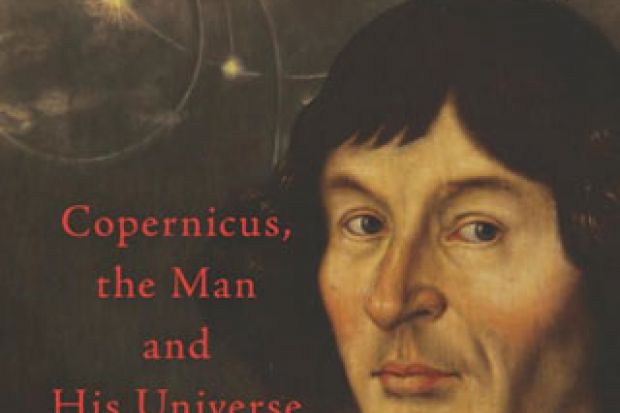In his new book, physicist and historian of science John Freely follows the order of the main written sources for the introduction of a sun-centred cosmos by Nicolaus Copernicus (1473-1543). He begins with Copernicus’ unpublished Commentariolus (composed about 1510), his lone student Georg Rheticus’ Narratio prima (1540) and Copernicus’ De revolutionibus, published with Rheticus’ help in 1543. Freely quotes extensively from these sources, a strategy with advantages and disadvantages. On the one hand the reader gets a flavour of the originals, and many technical details. On the other, Freely uses the late Edward Rosen’s badly flawed translations. A major problem is Rosen’s translation of the Latin word for “orb” as “circle”, or worse still, “orbit” – a concept introduced only decades later by Johannes Kepler. Freely, following Rosen, denies Copernicus’ commitment to solid celestial orbs carrying the planets and the Earth, hence erasing the physical structure of Copernicus’ cosmos.
The most important thing most people have never heard about Copernicus is that his seeming mathematical innovations were all borrowed, without attribution, from Islamic astronomers. In the Commentariolus and De revolutionibus he used a device for turning two circular motions into a straight line that was invented by Nasīr al-Dīn al-Tūsī (d.14), founder of the observatory at Marāgheh in modern-day Iran. The Commentariolus uses planetary models developed by Damascus astronomer Ibn al-Shātir (d.1375). In De revolutionibus, the main models use a mathematical technique developed by Mu’ayyad al-Dīn al-‘Urdī (d.1266), a colleague of al-Tūsī, and the complex models for Mercury and the Moon duplicate Ibn al-Shātir. Copernicus also used a version of Ptolemy containing a theorem first proved by Alī al-Qūshjī, who died the year after Copernicus’ birth. To his credit, Freely mentions all these people, if briefly, and the fact that Copernicus mentions none of them.
Copernicus’ appropriation of Islamic work flowed from his ambition to renovate astronomy, especially Ptolemy’s equant device, which led to non-uniform motions of planets about the centre of the cosmos. Islamic astronomers had developed new mechanisms to achieve this over the preceding 200 years. Less obvious is why Copernicus moved the centre of the cosmos from the Earth to the Sun, which no Islamic predecessor did. Freely offers no convincing explanation for this, or for combining a sun-centred cosmos with Islamic mathematics. The best explanation may lie in Copernicus’ debt to Plato, a topic explored by Matjaž Vesel in Copernicus: Platonist Astronomer-Philosopher (2014). Readers seeking more on Copernicus should look at Robert S. Westman’s The Copernican Question: Prognostication, Skepticism and Celestial Order (2011), a more challenging and rewarding book than Freely’s.
Did Copernicus borrow his mathematics or invent it? Islamic astronomy in his day was far more developed intellectually and institutionally than its European counterpart. The strongest argument for transmission rather than discovery is that the Islamic work he borrowed developed over two centuries, from the mature scientific culture within the Islamic world. No similar intellectual and cultural network supported Copernicus. We may celebrate him for introducing heliocentrism, but we should also recognise, as Freely does, that Western science has Eastern roots.
Celestial Revolutionary: Copernicus, the Man and His Universe
By John Freely
I. B. Tauris, 288pp, £18.99
ISBN 9781780763507
Published 15 June 2014
Register to continue
Why register?
- Registration is free and only takes a moment
- Once registered, you can read 3 articles a month
- Sign up for our newsletter
Subscribe
Or subscribe for unlimited access to:
- Unlimited access to news, views, insights & reviews
- Digital editions
- Digital access to THE’s university and college rankings analysis
Already registered or a current subscriber? Login





